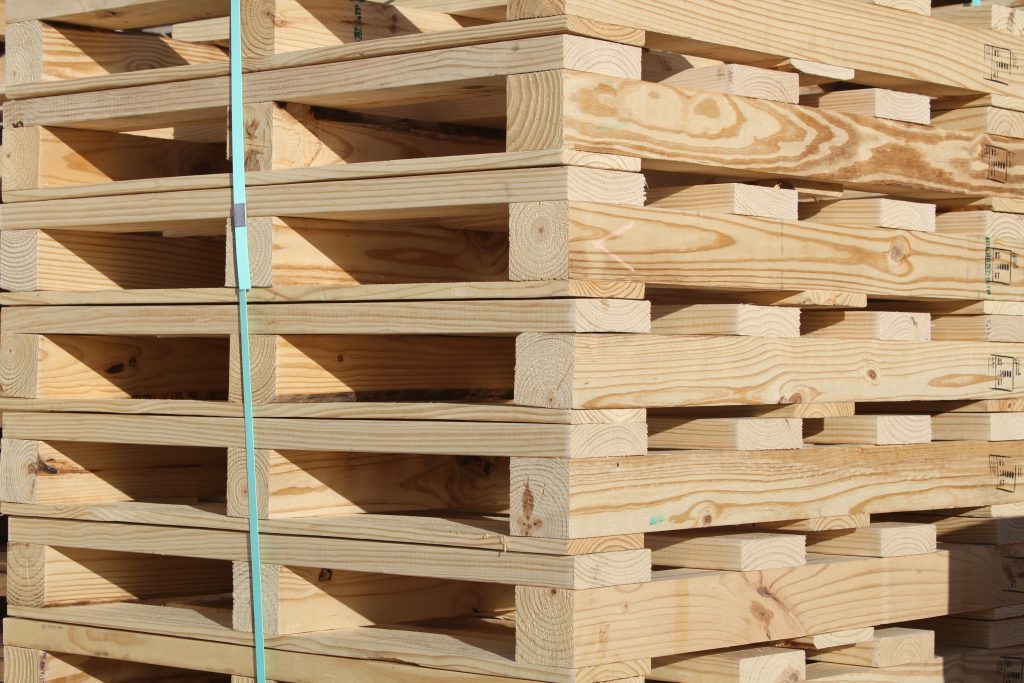Within the fast-paced world of logistics, efficiency is crucial. Every second counts, and each square inch of space is valuable. Introducing the modest wooden pallet, a simple yet transformative tool that has transformed how goods are shipped and warehouse. Such sturdy platforms are designed to hold and arrange products for easy movement, enabling businesses to maximize their operational efficiency while reducing waste.
Wooden pallets act as the foundation of modern warehousing and transportation systems. By providing a dependable means of piling, holding, and shipping goods, they simplify processes and boost productivity. Their flexibility and durability allow them to handle a diverse range of products, from delicate items to heavy machinery. As organizations seek innovative ways to enhance their logistics strategies, the power of wooden pallets is more apparent in their function as essential components in the journey from producer to end-user.
The History of Timber Pallets
The utilization of wooden pallets can be traced to the early 20th century, at which point they started gaining popularity in the shipping industries. Before the advent of pallets, goods were often transported in large quantities or in containers that were inefficient. The advent of wooden pallets allowed for a standardized method of managing, arranging, and transporting goods, allowing for smoother loading and unloading processes.
In the 1940s, wooden pallets became more widely accepted due to the rise of mechanized forklifts, which revolutionized the way goods were dealt with. This technological innovation enabled operators to effectively lift and move pallets filled with products, significantly reducing workforce expenses and enhancing productivity. As businesses recognized the value of using pallets, they quickly became a staple in warehouses and shipping operations around the globe.
By the mid-20th century, the design and construction of wooden pallets began to advance, leading to adaptations tailored for specific uses. This development allowed companies to enhance their storage solutions and more effectively protect their products during shipping. pallets in tulsa , wooden pallets are considered as an integral element in supply chain logistics, providing both versatility and strength in the movement of goods.
Advantages of Utilizing Wooden Pallets
Timber pallets are very versatile and provide a robust foundation for shipping a wide range of goods. Their sturdy design allows them to carry heavy loads while ensuring reliability during transit. This strength means that businesses can move larger quantities of products at once, improving efficiency in supply chain management. The robustness of wooden pallets also helps to reducing the risk of damage to goods, making them a popular choice in various industries.
One of the key benefits of wooden pallets is their cost-effectiveness. Compared to other materials like plastic or metal, wooden pallets are commonly more cost-effective to manufacture and purchase. Additionally, they are frequently reusable and recyclable, which can lead to substantial savings in both material costs and waste handling. Companies can also benefit from the availability of uniform sizes, making it easier to integrate wooden pallets into current storage and transportation systems.
Wooden pallets have a lower environmental impact when sourced sustainably. Many companies emphasize using pallets made from responsibly harvested wood, which can be a part of a company's eco-friendly initiatives. Furthermore, at the end of their lifecycle, wooden pallets can be repurposed or recycled into new products, reducing waste and promoting sustainability. This environmental advantage aligns well with the growing demand for environmentally friendly practices in the transportation and storage industries.
Innovations in Pallet Design

The development of pallet design has considerably enhanced the effectiveness of goods transportation. Modern wooden pallets are being engineered with precise dimensions and weight capacities to meet varied industry needs. Innovations such as interconnected designs allow for better stability during stacking and transportation, minimizing the chance of damage to goods. These advanced features not only safeguard products but also enhance space during transit and storage, maximizing the use of available resources.
Another notable development in pallet design is the inclusion of technology. Smart pallets equipped with sensors can monitor weight and temperature, providing instant data on the condition of goods. This not only ensures the safe delivery of products but also allows companies to follow shipments effectively, enhancing inventory management. The use of RFID tags further simplifies the supply chain process, making it easier for businesses to manage stock levels and reduce delays.
Eco-friendliness is also at the forefront of pallet innovations. Companies are increasingly focusing on eco-friendly wooden pallets made from responsibly sourced timber. These pallets not only promote sustainable practices but also offer durability and strength essential for transportation. Additionally, businesses are investigating recycling and reusing old pallets, thus minimizing waste and contributing to a circular economy. This move towards sustainable materials and practices reflects the rising demand for eco-friendly conscious solutions in the logistics industry.
